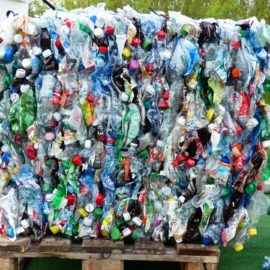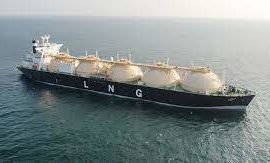
PHOTO FROM BAYOU LAFOURCHE FRESH WATER DISTRICT
The work has begun on the pumping station for Bayou Lafourche. The first step to improvement.
A long-delayed pump station considered the linchpin for a series of Bayou Lafourche and coastal restoration projects broke ground in Donaldsonville on Friday. The event marked the start of construction for the $96 million station, a project that caps a larger $220 million effort to reconnect the Mississippi River to the 106-mile-long bayou, which flows from Donaldsonville and empties into the Gulf of Mexico at Port Fourchon. “This is tremendous for the entire state,” Gov. John Bel Edwards said during a ceremony at the pump station site on Friday morning. “The lack of freshwater flowing into the bayou has endangered wetlands and drinking water supplies for 300,000 people. And it robbed this region of one of its most scenic waterways for too long.”
nola.com
It has been over 100 years since the Mississippi has run through the bayou and that lack of flow has caused problems.
The bayou was sealed off from the Mississippi, its main source of freshwater, more than a century ago, triggering a series of environmental problems, including the loss of wetlands south of Houma and New Orleans. The new station will be built on the river levee in downtown Donaldsonville alongside a nearly 70-year-old pump. The added pumping capacity will triple the river’s flows into the bayou and help revive the marshes and barrier islands that protect a large area of south Louisiana from hurricanes and sea level rise. It will also ensure a region of south Louisiana will have a safe, reliable source of drinking water, officials said. Poor water quality had been an issue in bayou communities for decades. As the bayou’s flows weakened and seawater pushed inland, many bayou residents complained of increasingly smelly and salty water. The issue came to a head in 2008 when Hurricane Gustav churned up the stagnant bayou and sealed its mouth with sand. Boil-water advisories for about 300,000 residents lasted for weeks. “After Gustav, that water was stagnant and disgusting,” U.S. Rep. Garret Graves, R-Baton Rouge, said at the event, which drew about 75 people. “You could smell the bayou for miles.”
Work has begun on the down stream area to ensure the increased stream will be accepted by the bayou.
The Bayou Lafourche Fresh Water District spent the past 11 years preparing the bayou for the pump station’s increased flows. The district widened and deepened several miles of the bayou, raised a Donaldsonville railroad crossing, installed water control gates and removed a small dam in Thibodaux. The restoration work has already made the bayou a more enticing place for residents. A half dozen park projects are planned or underway along bayou. Recent recreational projects have included public docks, boat launches and bayou-side trails. The district has been trying to get the pump station approved since 2016. Progress slowed after a range of concerns, including noise, aesthetics and historic preservation, were raised by the U.S. Army Corps of Engineers and leaders in Donaldsonville. Graves likened the process to regulatory “whack-a-mole.”
The Corps approved the plan last November after the district agreed to some changes.
The Army Corps granted approval last November after the district agreed to build a park, muffle the station’s noise, alter its design to fit Donaldsonville’s historic character, and install signs noting the history of an older pump, which the Army Corps considers historically significant. The pump’s costs ballooned by almost $20 million over the past two years. “That’s 100% attributed to the delay in permitting,” said Ben Malbrough, the water district’s executive director. “What happened over the past two years? Covid and inflation. We had all that going on when we’re trying to navigate this regulatory process.” The budget overflows were covered by the state Legislature last spring. Other funding sources include the water district and federal offshore oil and gas lease revenue. The station is scheduled to begin operating in late 2025.

Wetlands will be helped by this new water flow.
By Army Corps estimates, at least 85,000 acres of wetland will benefit from the added freshwater flows. Of the $220 million that’s been invested in numerous bayou restoration projects, the pump station is “the single most important and transformative project,” Edwards said. “Restoring marshes offers Louisiana critical protection from hurricanes,” he said. “That’s why we have a sense of urgency to do this kind of work.”
This is a project that will help with flood protection, hurricane protection and give the residents recreational space.



